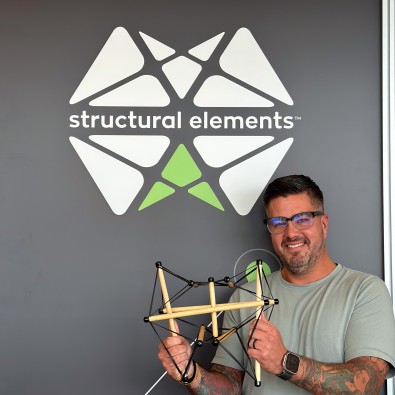Tensegrity and Human Structural Integrity: The Story Behind Structural Elements®
In the realm of structural engineering, the principles of balance and tensional integrity are paramount. From towering skyscrapers to intricate bridges, the delicate interplay between compression and tension elements is the key to maintaining structural stability. But what if we told you these principles also apply to the human body? In this blog post, we delve into the intriguing concept of tensegrity as the basis of human structure and the story behind the Structural Elements® logo.
Tensegrity: The Foundation of Human Structure
The term "tensegrity" is the compound word of "tensional integrity," it forms the core of the Structural Elements® philosophy. Just as in architecture, where it represents a balance of compression and tension elements, tensegrity in the human body is about maintaining equilibrium between the forces that act upon it. In this case, the compression elements are our bones, while the tension elements encompass tendons, ligaments, and the intricate fascia that weaves throughout our body, forming a floating net.
Picture your body as a complex web of interconnected elements. When these elements are in harmony, the body operates optimally, allowing for graceful movement and pain-free living. However, any imbalances in the system can disrupt this harmony, resulting in discomfort and dysfunction.
The Structural Elements® Approach
At Structural Elements®, we see ourselves as Body Engineers. Our mission is to evaluate the human body through the lens of structural integrity. By understanding the interplay between compression and tension elements, we strive to bring the body back into balance. This approach goes beyond just treating the site of pain. Instead, we often address structural imbalances on the opposite side of the body, and even in distal areas, to restore the body's overall equilibrium.
For instance, if you're experiencing shoulder pain, we might focus on treating areas of your back or feet. Why? Because the body is viewed as a cohesive and dynamic system where changes in one area can affect the entire structure. Just as a structural engineer aims for a level and stable foundation in a building, Structural Elements® seeks to establish a "neutral horizon" in the human body. This means ensuring that your eyes and ears are level and any structural imbalances in the pelvis or lower body are addressed to prevent compensation.
The Structural Elements® Logo: A Symbol of Tensegrity
The Structural Elements® logo is more than just a design; it symbolizes our philosophy. It represents a Tensegrity Model, encapsulating the principles of tensional integrity. In the logo, you can see the balance between compression and tension elements – the compression members float within a net of tension members, illustrating the concept of prestress. Any change in tension or position is immediately redistributed throughout the system, much like how our body adapts to maintain stability.
Conclusion
The story behind the Structural Elements® logo is not just about aesthetics; it's about a profound understanding of the human body's structural integrity. By embracing the principles of tensegrity, Structural Elements® offers a unique approach to health and well-being. Our focus is on balance and harmony, and the interconnectedness of our structural elements sets us apart as pioneers in the field of holistic body engineering. Whether you're seeking relief from pain or aiming for optimal physical performance, our philosophy serves as a guiding light toward a more balanced, pain-free life.
